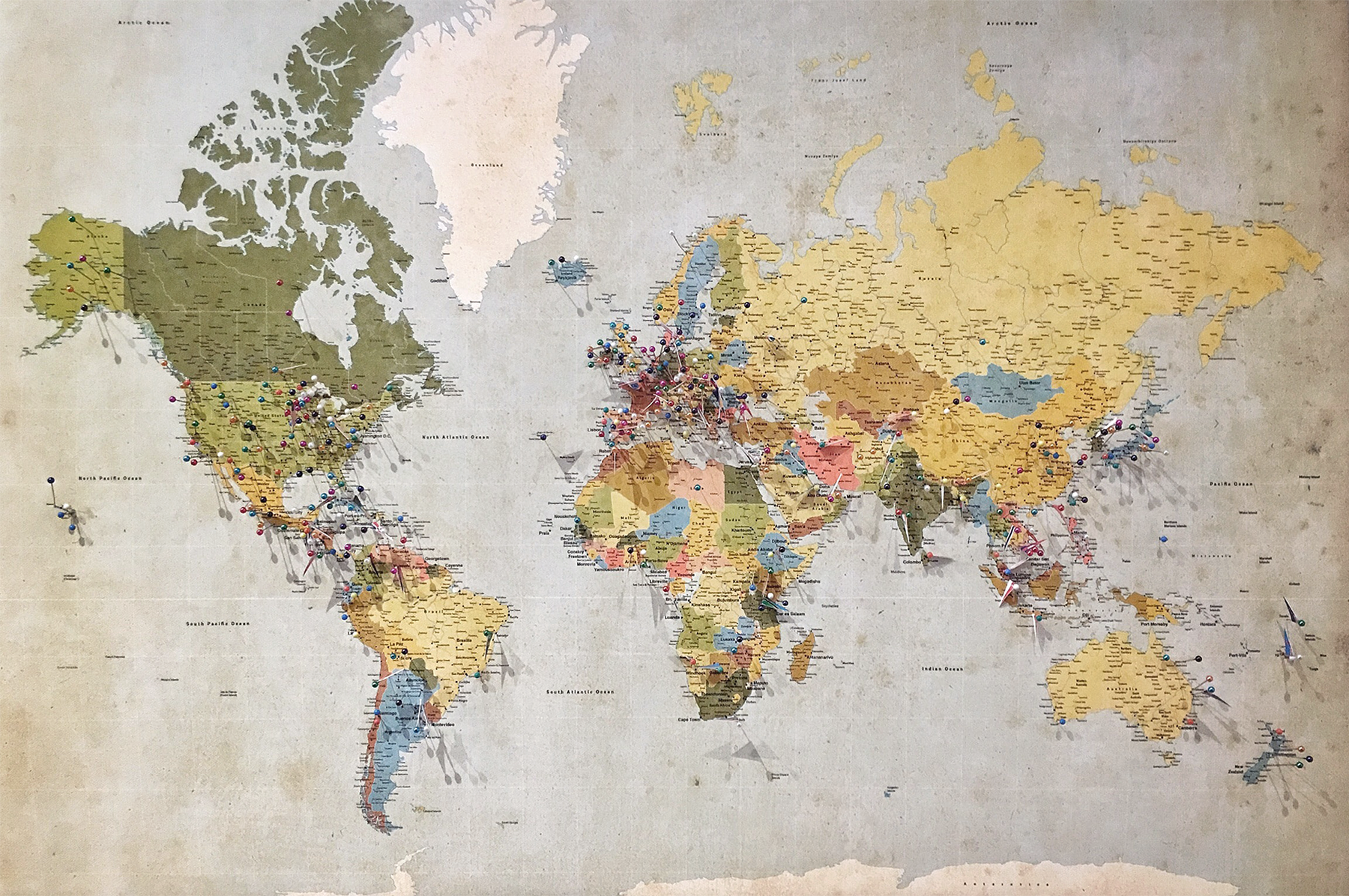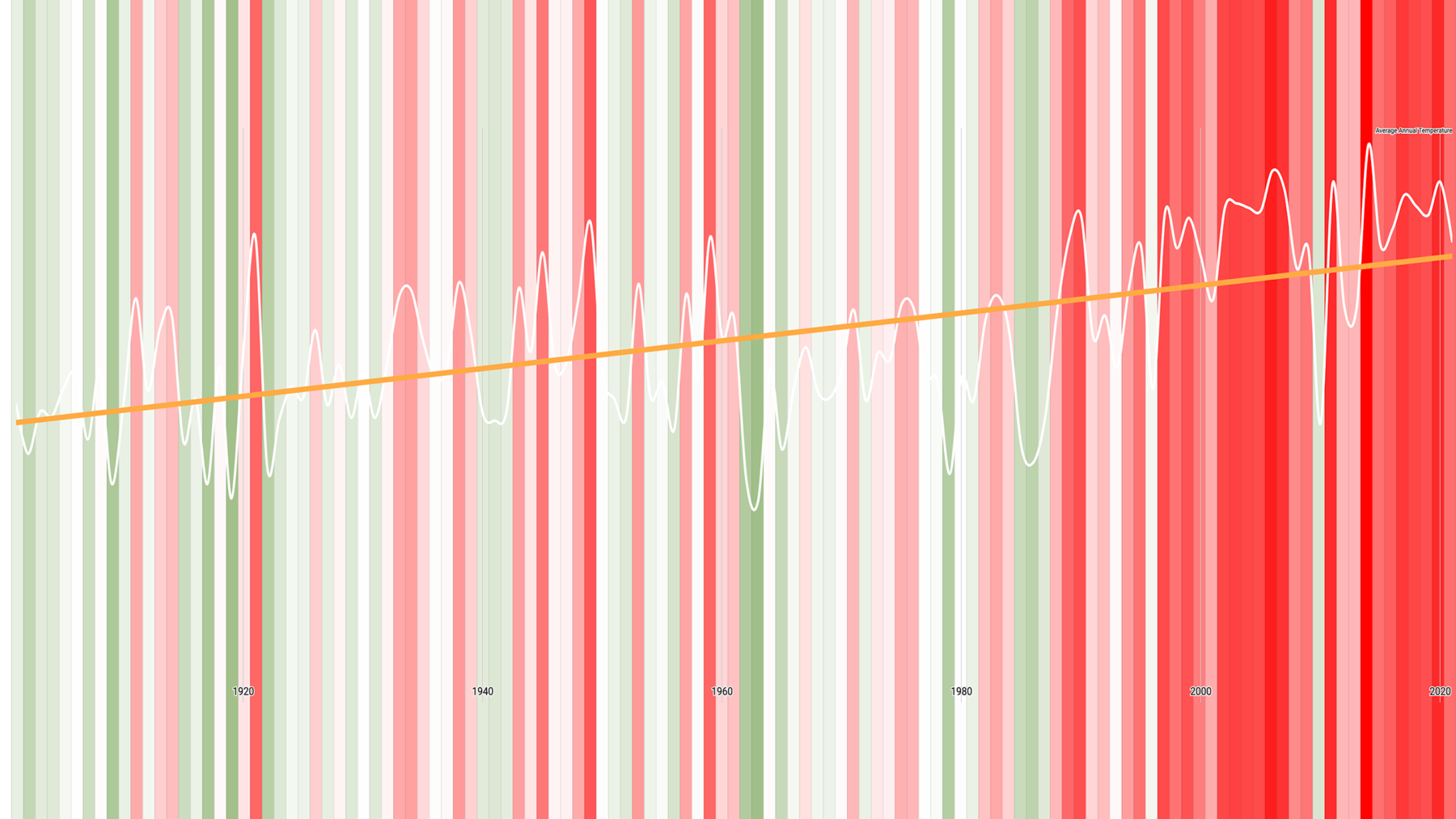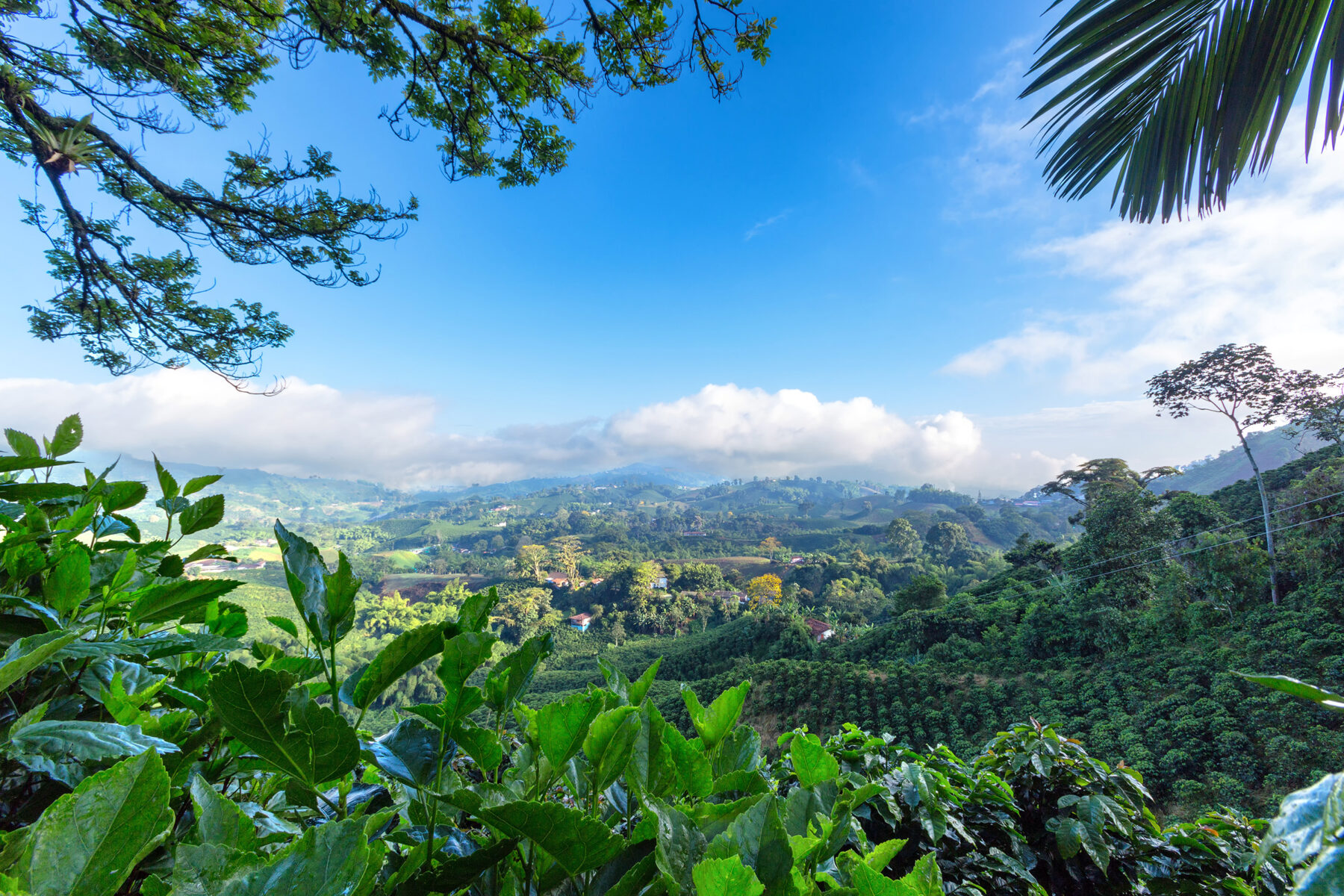
It might have been a good year for climate change negotiations, but in 2021 the world still emitted record levels of greenhouse gases
Further progress was made on climate change at COP26 in 2021.
It’s agreed that coal-fired electricity should be discontinued, renewable and nuclear energy generation will increase, and that the world should aim for temperature rises to peak at no more than 1.5 degrees over pre-industrial levels to prevent the worst impacts of climate change.
The world is running out of headroom.
Take the UK for example. Since 2000, almost every year has been significantly warmer than it was a century ago. In fact, average annual temperatures are often over one degree warmer than they were in 1900.

Using data from the UK’s Met Office for mean air temperature (records which began just before 1900), it’s clear that the annual average temperature has steadily increased over the past 120 years. This increase is clearly shown by the orange trend line. While annual temperatures vary in any given year because of meteorological factors (the white line), these variations occur on top of the underlying temperature increases from global warming.
That the UK is getting hotter is clearly shown in the colour bars. A white bar indicates a year where the temperature was similar to 1900. Green bars are used for years that are cooler than 1900, with darker greens indicating colder temperatures.
But the overwhelming trend is the increasing number of red bars. The darker the red, the hotter the annual mean air temperature. It’s been much hotter for the past 20 years. And that’s because we’ve been emitting record levels of greenhouse gases.
Coffee Forever

How can we make specialty coffee more sustainable?
Carbon emissions are at record highs as well
In 2020 global emissions fell by 1.9 billion tonnes following lockdowns as coronavirus first swept the world. Factories shut down for periods of time, there was less air travel and with home-working being at times mandatory or desirable there was less commuting.
The Global Carbon Project estimates that in 2021 total emissions rebounded to just under pre-pandemic levels; 2019 was an all-time high for humanity’s greenhouse gas emissions. This makes limiting the impacts of climate change increasingly difficult.
Carbon dioxide stays in the earth’s atmosphere for 300 – 1,000 years. That means that the first carbon dioxide emitted by coal-fired factories and steam trains at the beginning of the industrial revolution (over 100 years before our chart starts) is finally about to breakdown in the earth’s atmosphere.
Every tonne of carbon dioxide saved in 2022, makes it easier to limit temperature increases over the 21st century. It’s estimated that there is currently a 17 – 20 billion tonne shortfall over the coming 10 years between the reductions that are required to limit temperature increases to 1.5 degrees and the present reduction commitments. We don’t have time to waste. A kilogram saved today both keeps 1.5 alive and makes the magnitude of the changes required tomorrow less dramatic.
This is – unfortunately – very clear across the coffee supply chain. Coffee farmers and producers are already working to mitigate the impacts of climate change. Increasing temperatures, sudden dry spells and more rainfall make growing coffea arabica all the more challenging. In fact it is feared farmers in a number of key regions will have to change cultivars, move to cooler regions or stop growing coffee and switch to other crops to maintain their livelihoods by 2050.
What we can do in 2022
This year coffee shops can continue to do the things that we already know work:
- increase the sale of oat milk and/or use low-methane dairy
- buy ‘green’ electricity
- maintain their coffee equipment to maximise its working life
- when buying a new espresso machine, purchase an energy-efficient model
- reduce food waste
Reducing carbon emissions
What is your coffee business doing to reduce carbon emissions? Let us know, we’re on all the usual channels.
This year United Baristas is embarking on further work to find practical and effective ways to further reduce coffee’s carbon footprint. As an industry we’ve got to get to the position where we can plan to make to ambitious reductions, such as reducing emissions by 30% by 2030. But before the industry is able to commit, we need to understand what actions really count, how actions can be viably implemented and who is going to pay for these changes.
If you’ve got ideas and are making changes, please drop us a line to share your experience. And if you’re up for making changes but are unsure where to start, we can encourage you to subscribe to our monthly newsletter to automatically get more information like this.
Together, the coffee community can tackle coffee’s carbon footprint this year. Are you going to be part of the solution?



